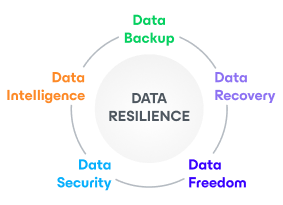Read the full series:
|
Ch.1 – Architecture & Requirements |
Ch.9 – Volume recovery |
It probably has been said ten million times before but it’s worth saying again… Backup always leads to recovery and recovery should be easy. In previous posts we looked at the integration of Veeam Backup & Replication with Veeam Endpoint Backup FREE and already gave you some recovery options that you get with the integration. Today we are going to review the recovery options available for any end user.
Before we dive in to this, keep in mind that recovery options highly rely on the backup mode you used. For example, it not possible to recover the entire computer from your personal files backup.
Individual files
This option you can choose no matter what backup mode you have selected. Even if you use entire PC backup, you don’t need to restore everything to get a simple file back. For those of you who worked already with Veeam Backup & Replication, this restore will look very familiar.
There are three methods to start restoring files. First one is launching the wizard from the windows start screen. You need to find the File Level Restore application and open it. The second method is to right-click the notification icon, and choose Restore – Individual files. These two methods will pop up a wizard on a restore point selection step
The wizard approach is very handy when you need to recover files from other PCs backups: you can actually go one step back (by pressing the previous button) and open the Backup Location wizard’s step where you can manually specify the backup file location.
The third method is to open Veeam Endpoint Backup Control Panel and click the needed bar on the chart Once done, you will see the details of the specific backup associated with this bar and what’s more important you can start a restore directly from this screen. By the way as you can see on the screenshot below my restore point does not contain any volumes thus volume level recovery is not possible.
Once you passed all the wizards steps and clicked Open or in case you launched File Level Recovery directly from Control Panel the backup file is mounted to the operating system under C:\VeeamFLR so you can browse thru the backup browser or thru the regular Windows browser.
For the restore via backup browser, you also have a few options:
- Overwrite: If you use this option we will restore the file to the original location and if that file still exists at that location, we will overwrite it.
- Keep: When you select this option, the file will also be restored to the same location, but we will add Restored – in front of the filename. That means you can retrieve the file easily AND we won’t overwrite the original one if it is still present.
- Copy To…: Copy to will give you the possibility to restore it to another location and it will give you the ability to preserve the permissions and ownership of the file
Last but not least, restoring multiple files or folders at once is perfectly possible by using the known multi-select options.
Conclusion
In this post we looked at the file-level restore capabilities of Veeam Endpoint Backup FREE. We still need to look at volume-level recoveries and bare metal recoveries but that will be for later posts.
File-level recoveries is very powerful and gives you multiple restore capabilities from overwriting existing files / folders with previous versions to copy the files / folders to different locations and more.
The handy backup wizard allows you to browse through your entire files set and no matter what backup mode you have chosen, you always will be able to do file-level recoveries
For more information, watch the video.
Read the next chapter:
- Ch.9 – Volume recovery
See More




